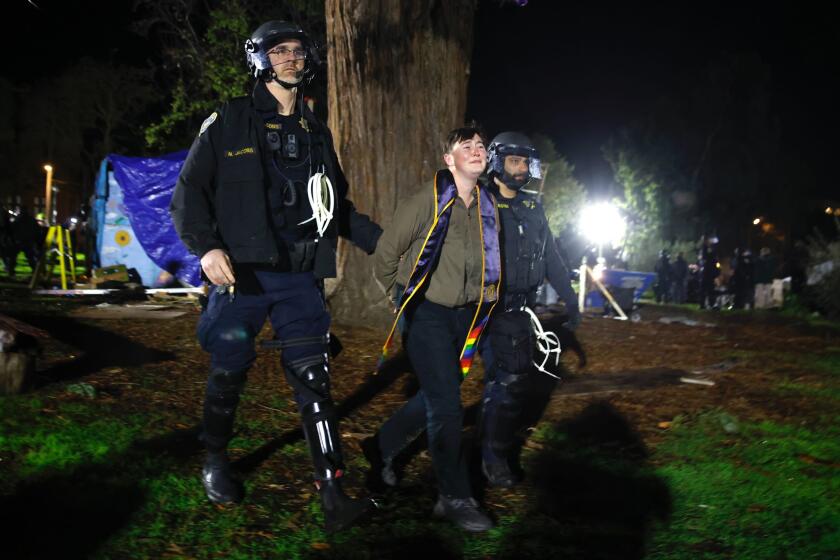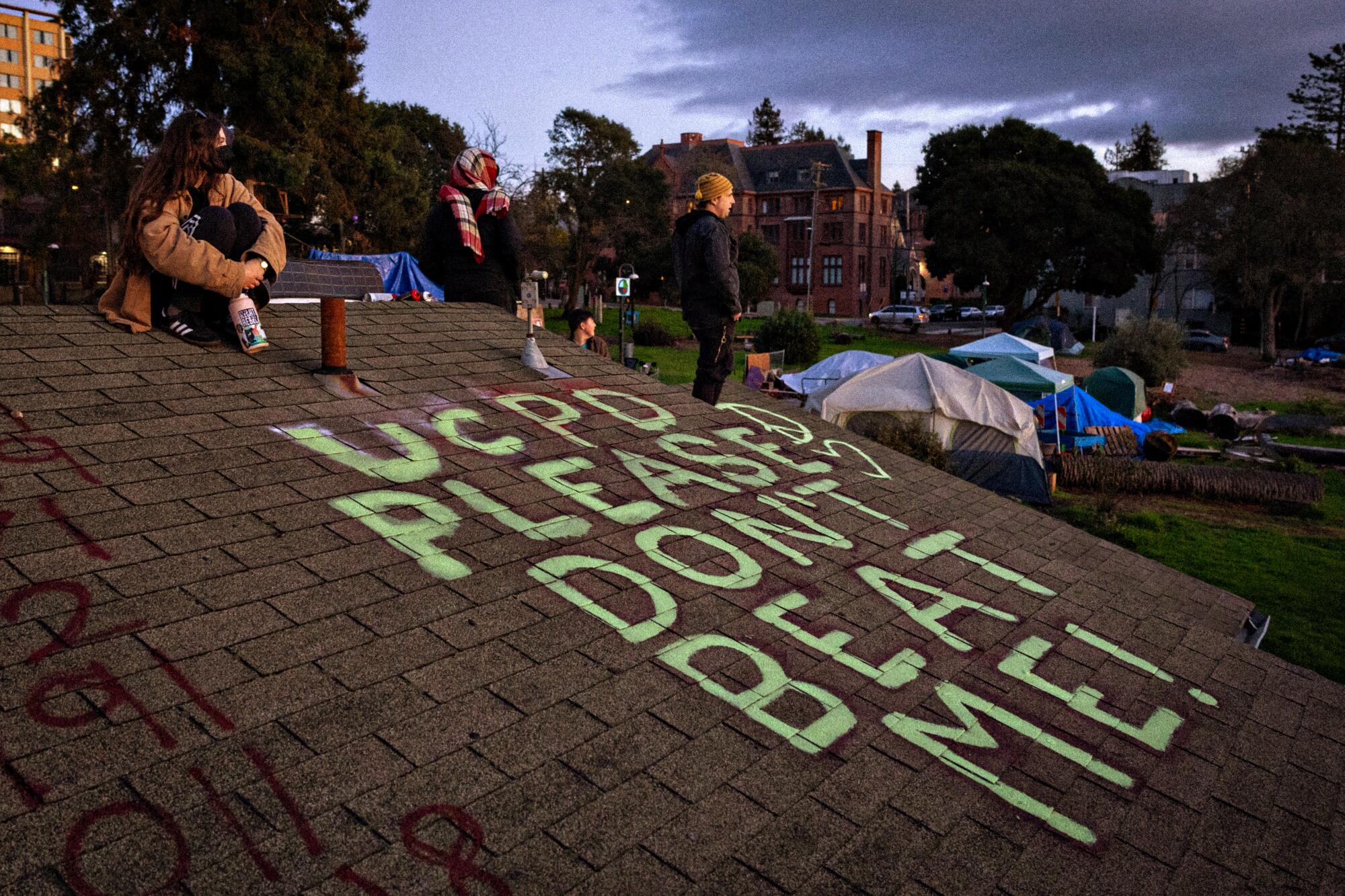
BERKELEY — Before the first shrubs and hunks of sod, before the saplings and the flower beds, before the folk art and anything-goes performance stage, People’s Park was an idea.
It would be an open space for open people, in the heart of this university town, birthed by 1960s radicals and nurtured by subsequent generations of freethinkers who believed in the notion that people would sustain and support one another, if only they had a place to gather.
The utopian ideal of People’s Park lived in the hearts of many people in the decades after its 1969 founding, even as neglect and the lack of a cohesive vision saw the space devolve into the darker reaches wrought by homelessness, drug use and despair.
But the dream of a people-powered open space that answered to no powerful institution — least of all the grandees of the adjacent UC Berkeley campus — appears on the verge of collapse. Nearly 55 years after activists seized the park and declared it the people’s place, the university retook control of the scruffy 2.8-acre green space this week with a massive police deployment and the erection of a formidable barrier made of steel cargo containers, stacked two-high.
UC Berkeley now appears closer to realizing its plan to develop the park site than at any other time in its long and contentious history. The university is waiting for a state Supreme Court decision that it hopes will clear the way for construction of a high-rise dormitory complex for 1,100 students and an apartment building to house as many as 125 low-income and previously homeless people.
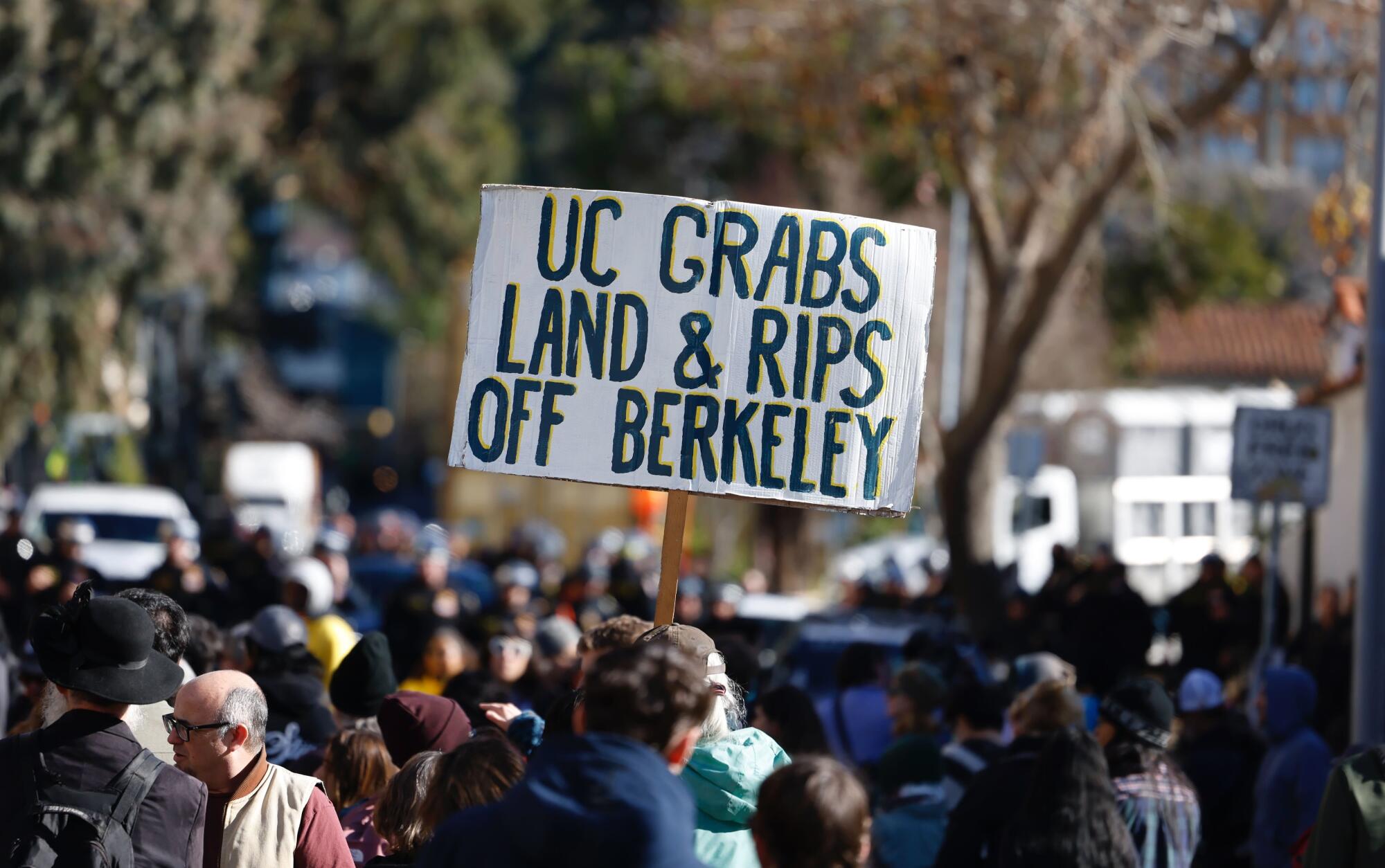
“I certainly hope it’s a watershed moment,” Berkeley Chancellor Carol Christ said in a phone interview Friday. “If you think about what the most urgent need in our communities is, it’s housing. We have a dire shortage of student housing; we also have a dire shortage of permanent supportive housing for the homeless.”
The former English literature professor, who is retiring this summer, said she believes the park’s redevelopment will go down as “one of the most important things I’ve done.”
Even some die-hard supporters of People’s Park — who over the years have mounted fierce physical and legal battles to preserve it as a living tribute to activism — concede the park’s days appear numbered.
“I think it’ll take something of a miracle for the opposition to succeed now,” said Steve Wasserman, who helped cultivate the park as a teenager and decades later published a history on the 50th anniversary of the event. “But for those of us who helped build the park and have been its stewards, and who seek to make sure that the flame of rebellion is not utterly snuffed out, Berkeley has always been the Republic of Lost Causes. This is one of the great ones.”
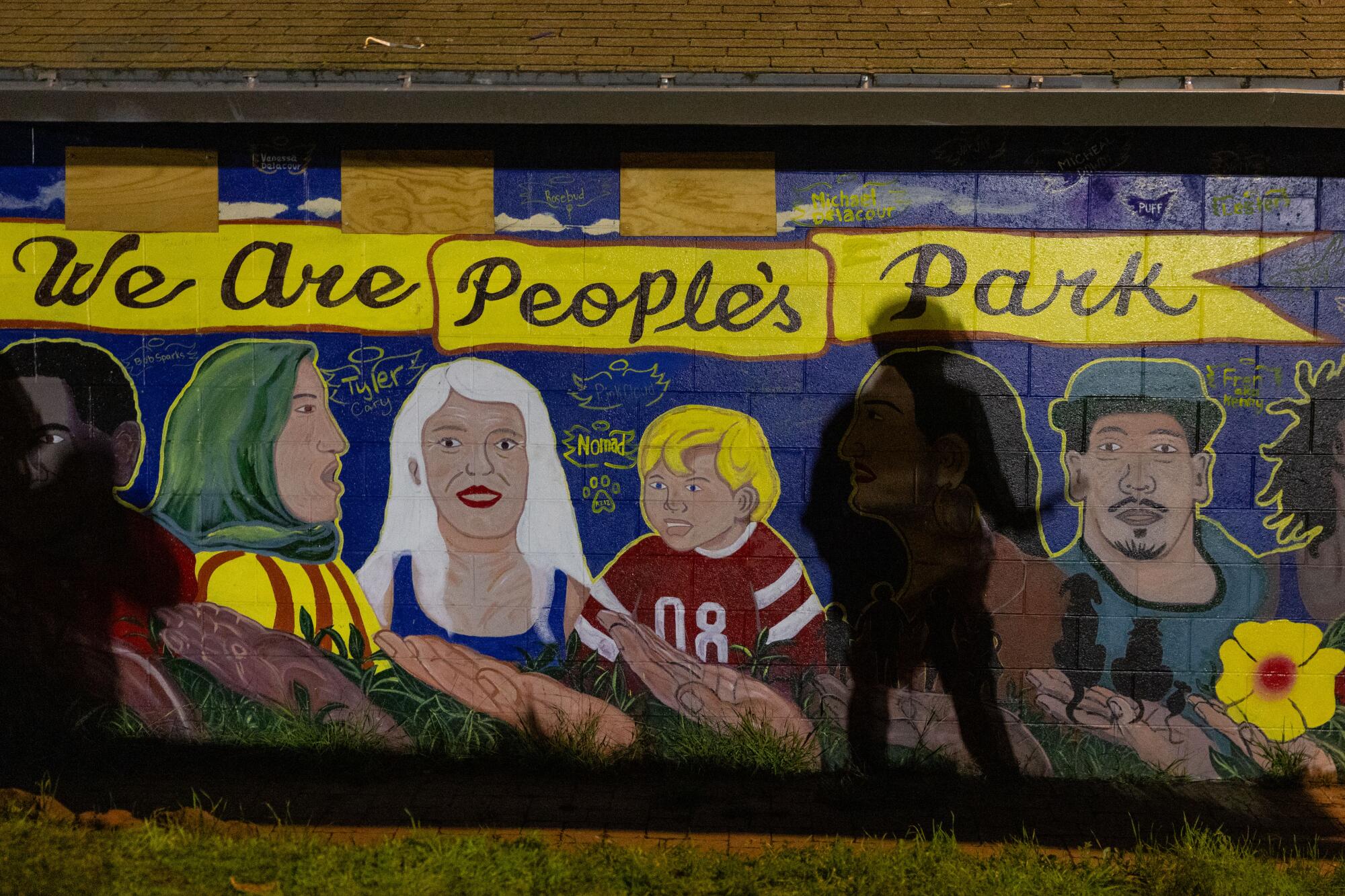
The sharp turn in People’s Park’s destiny came Thursday, when UC Berkeley launched a pre-dawn incursion, sending in hundreds of law enforcement officers who secured the site and cleared the way for crews to wall off the storied space. UC launched the extraordinary operation just after midnight, deploying construction crews to erect a 17-foot-high fortification by double-stacking heavy metal cargo containers around the park perimeter. By starting the exercise while most students were away on winter break, university leaders minimized the raucous backlashes that have bedeviled previous attempts by campus officials to take control of the park. Police met minimal resistance, and by midday Friday, People’s Park was encased in its new steel bulwark.
That People’s Park could be nearing its end is, in many ways, a reflection of the changing politics of the city, the university and the state.
UC Berkeley officials hope a barrier of cargo containers will keep protesters out of People’s Park while the campus moves to convert the historic site to student housing.
Even in reliably left-wing Berkeley, the idea of what it means to be progressive has shifted in recent years. With rents around town spiraling ever upward, students desperate to find affordable units and the ranks of homeless people growing, the university faced tremendous pressure to build new housing. And even some “good liberals” — once decidedly anti-development — came to favor housing construction.
The university also found itself on the receiving end of a drumbeat of criticism, much of it from students and parents, that People’s Park had become a magnet for drug use, muggings and violent crimes. The idyllic human crossroads envisioned by its founders seemed, at best, a nostalgic yearning to many park neighbors.
Another blow has come with the death of many of the park’s founders, thinning the ranks of those who would bear any burden for the space, said Wasserman, publisher of Berkeley-based Heyday Books and “The Battle for People’s Park, Berkeley 1969.”
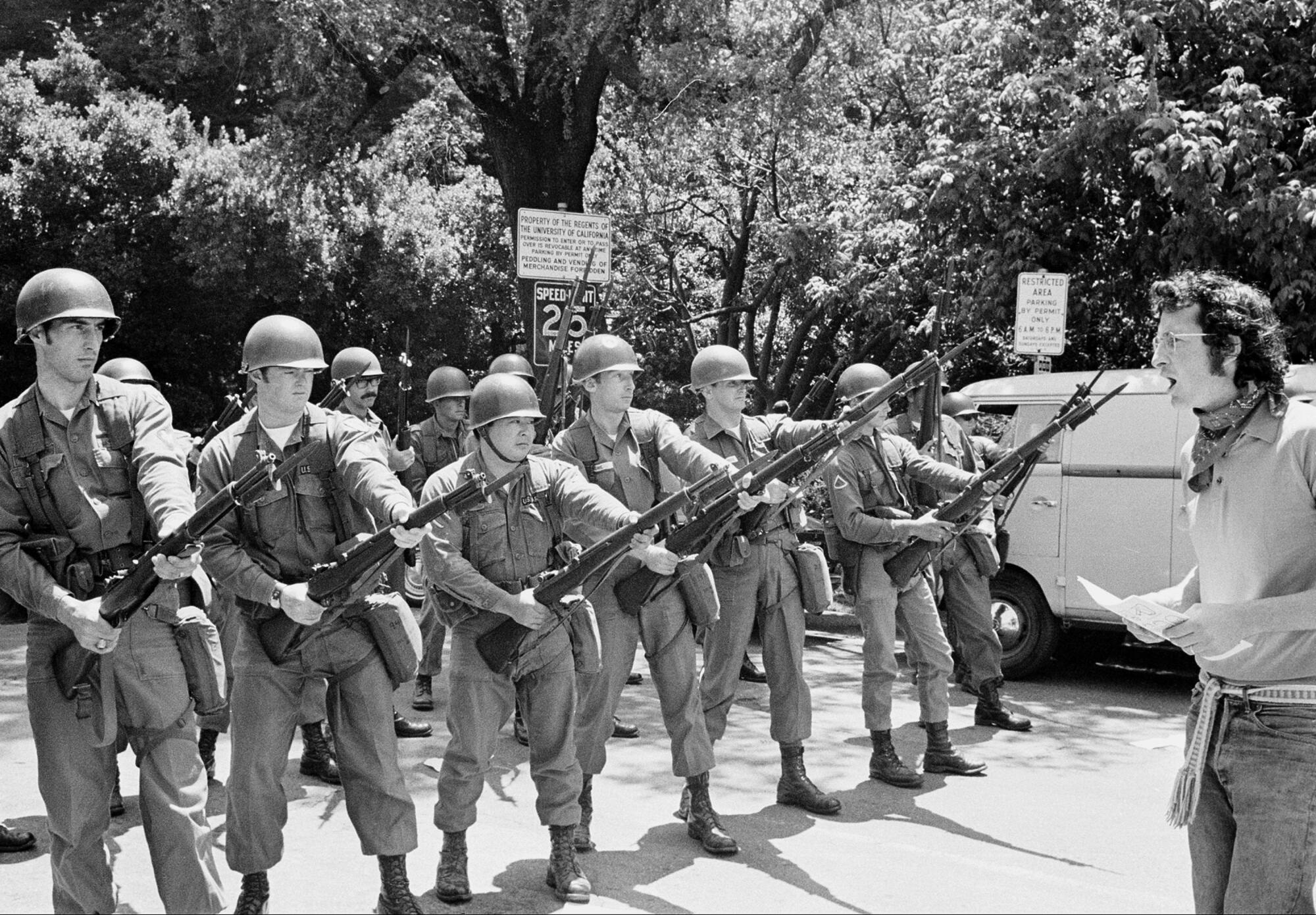
On campus Friday, Andrew Paul Gutierrez, a retired professor of environmental science, passed out fliers protesting Israel’s war in Gaza. Gutierrez, 84, said he believed the city and university’s time as a “magical place” had waned, supplanted by a community that had become “more corporate, more businesslike” and less defiant of institutions.
One of the park’s earlier activists, Judy Gumbo, recalled a higher level of fervor in the spring of 1969, when her planned march for women’s rights was upended by contention over the fledgling park. UC Berkeley had erected a fence at the site and sent in armed officers to try to take back the space, sparking a bloody confrontation with students and activists. She recalled pressing so hard against the newly erected fence that the chain-link left diamond-shaped welts on her palms.
“Those of us who were here when the park was founded have much more of a sense of emotional connection to it than the young people” who are students now, said Gumbo, 80.
By Friday morning, the park as Gumbo knew it was no more. Police lines kept any remaining protesters — and there appeared to be very few — at least half a block from the park. The green space that had been the scene of impromptu concerts, chess matches, basketball games and drug deals had been largely bulldozed, with many of the trees felled, and cordoned off by the graffitied shipping containers.
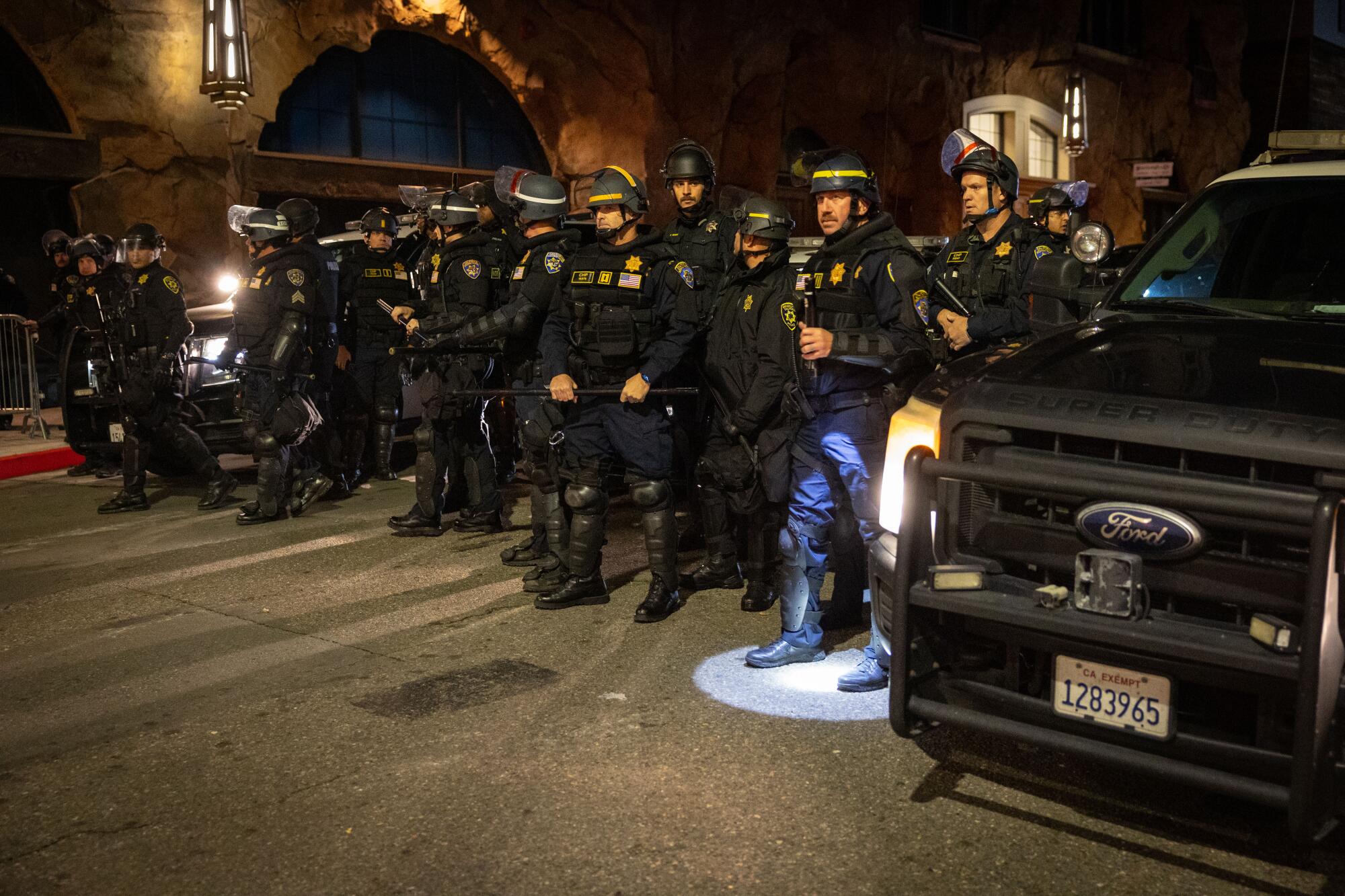
Inside, yellow-vested construction workers filled gaps in the fortification with metal plates. Cleanup crews collected piles of trash and detritus. Flies swarmed over a rat flattened by construction equipment.
Wasserman sounded a wistful note for the park’s founding, which he called “a golden moment, and the utopian longings of that period for peace, love and a place where all good things could thrive.”
“It had been an eyesore. It was just a muddy lot when it rained,” he continued. “And so a group of ne’er-do-wells, mischief makers and assorted Yippies decided to turn it into a park that was free for all. It really caught the imagination of people in Berkeley and beyond.”
Andrea Pritchett, a member of the People’s Park Council advocacy group, blamed the city of Berkeley and the university for betraying those ideals.
“It was a place where people who were countercultural or creative or unusual could manifest and exist in community,” said Pritchett, 60, a middle-school teacher in Berkeley. “The point was that if you wanted to organize a group, you sit under the shade of the trees and organize.”
She rejected the idea that university leaders reluctantly took control because of a need for student housing. “It’s always been about breaking the back of the counterculture,” Pritchett said. “It’s always been about getting rid of unwanted populations.”
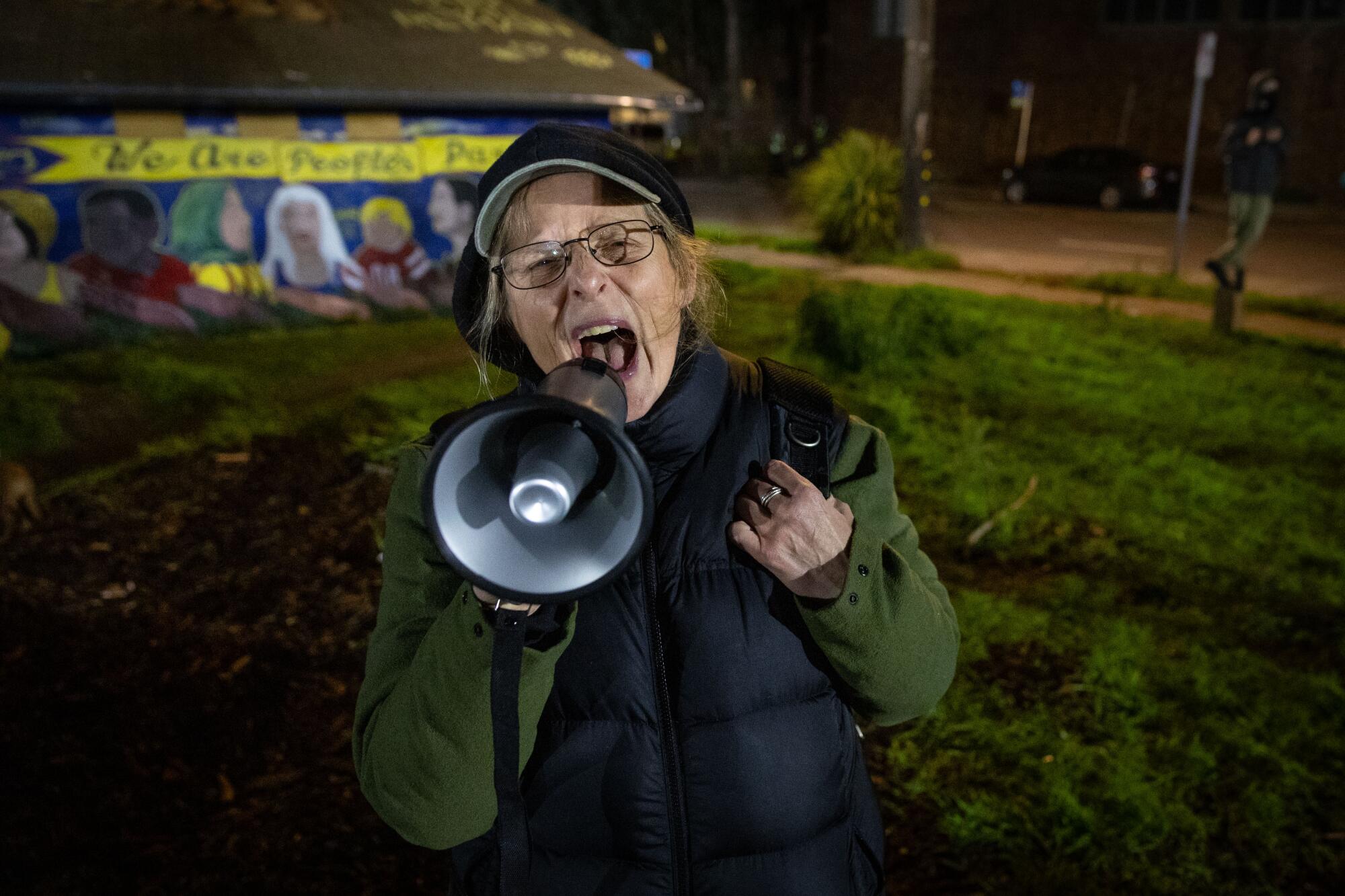
University officials said work on the park security system should be complete by Sunday. Streets surrounding the park will then reopen, with security officers in place “24/7” until the proposed housing complex, pending court approval, can be completed.
Though the park’s supporters have been vocal, the university has the strong support of many Berkeley city leaders and residents, and its surveys show a majority of students favor the redevelopment.
Matthew Lewis, a Berkeley resident and a spokesperson for the pro-housing organization California YIMBY, said that while Berkeley has long stood as a symbol of free expression and activism, many of the protesters are missing the bigger picture of the university’s plan.
“We have an abject housing crisis. We have homelessness, like any city in California. We have students sleeping in their cars,” Lewis said. “And here’s a proposal not only for student housing, but for supportive housing for people experiencing homelessness. It’s exactly what we need.”
Lewis argued that the very people activists say they want to help, the unhoused, would be those most benefiting from the People’s Park project. “Providing supportive housing for them will protect them from the criminal activity that has been going on in People’s Park for decades,” he said.
Berkeley Mayor Jesse Arreguin echoed those sentiments on the social media platform X. “The current state of People’s Park does not reflect the original ideals,” he wrote. “Protesters don’t represent the majority of our community who support needed housing and a new vision for the park.”
Christ rejected claims that the university had betrayed its ideals. She said the project would be “ideal in providing shelter and recreational space for the people,” with 60% of the property left open and a yet-to-be-designed installation paying tribute to the park’s history.
“The park is really going to be a place that people are not scared to go, which is the case now,” Christ said. “It will be a community base and one that represents the story and all the multitude of voices in telling what has happened there.”
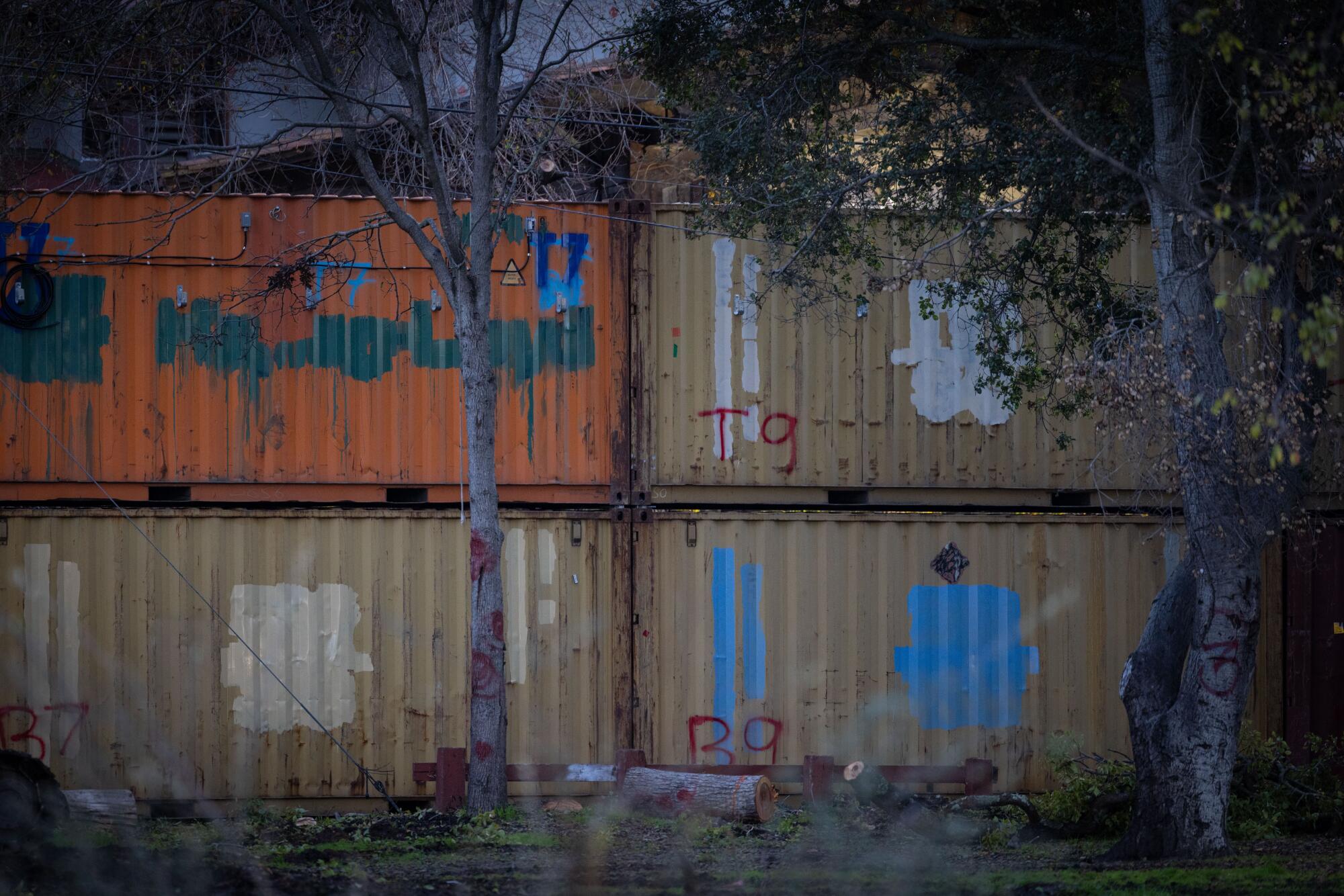
Pritchett and several other park activists accused the university of purposely neglecting the space and then using its degradation as an excuse for shutting it down. She said she did not know what was next for People’s Park, but hoped it or its spirit would somehow survive.
Others in her group were not quite ready to hand victory to the university.
“I see this as just the latest iteration — the flailing arms of the serpent of capitalism as it’s being exposed for what it is,” said Maxina Ventura, a homeopath and decades-long member of the People’s Park Council. “You can cement it over and keep assaulting and insulting the park. But it’s much larger than any of the individuals involved.”
More to Read
Sign up for Essential California
The most important California stories and recommendations in your inbox every morning.
You may occasionally receive promotional content from the Los Angeles Times.
